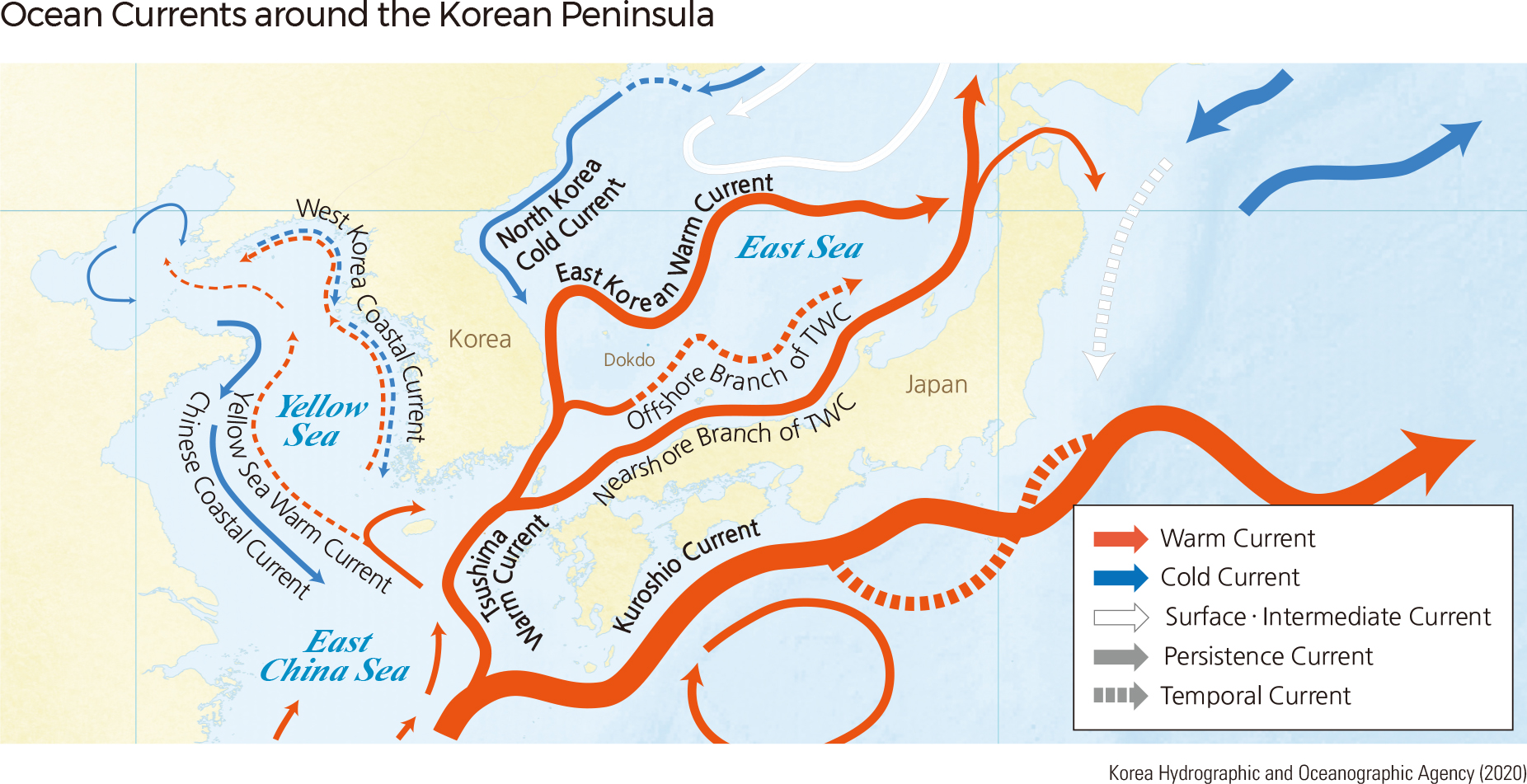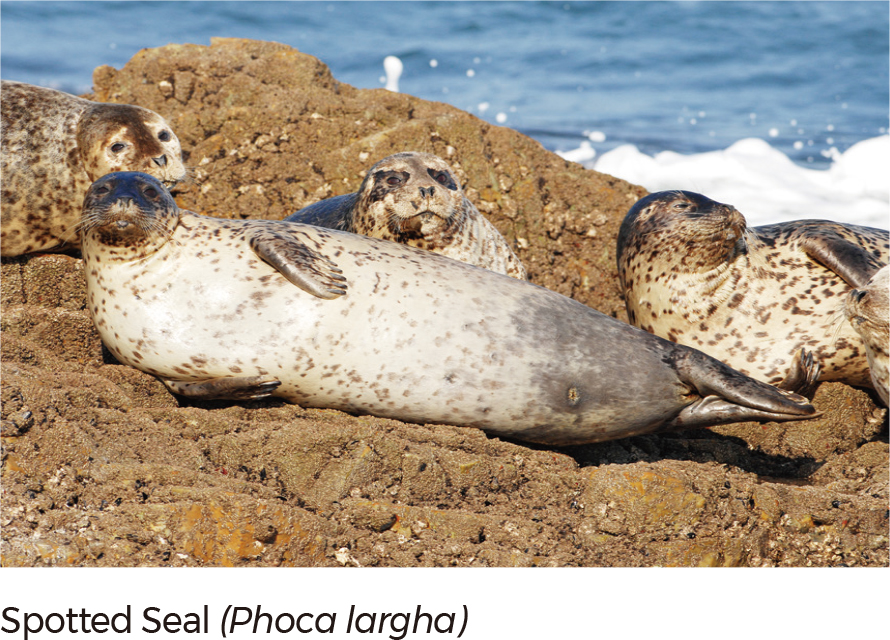Comprehensive Edition 2022
The east coast has a relatively simple coastline with deep water just offshore. It has well-developed, narrow beaches, but the steep slopes of coastal and seabed topography prevent the development of tidal flats or broad continental shelves. In contrast, the western coast has low topographic relief and wide tidal flats. Tidal flats are classified based on the predominant sediment type: mud flats, sand flats, or mixed. They can also be categorized according to geomorphological features: open flats are strongly affected by tidal currents and waves; estuarine flats are located along large river mouths; and bay flats are rarely affected by waves due to their more sheltered locations.
Estuaries are ecological transition zones where freshwater and seawater meet. Although they are home to the highest biological productivity on the planet, their ecosystems are increasingly impaired due to various development ventures. In response, Korea has been carrying out surveys of the current ecosystem status of estuaries to monitor their ecological functions. These surveys have designated certain estuaries as Ecosystem Conservation Areas or Wetland Protection Areas. From 2004 to 2014, the Ministry of Environment completed a detailed investigation for 28 main estuaries (such as the Hangang and Tamjingang). Currently, the National Wetland Center of Korea is in the process of conducting detailed and basic investigations for the other estuaries.
Korean seas have complicated physical, chemical, and geological characteristics—seasonal ocean currents, tides, and complex topographical features—and have a range of marine habitats with unique ecological communities. As South Korea is a gateway to the Asian continent, the Korean people have a long history of active trading via the oceans. Through the centuries, Korean navigation techniques have been well advanced, relying on a keen understanding of tidal currents, ocean currents, and winds.
Thirty species of cetaceans and three species of pinnipeds are found in Korea. Several whale species have been designated as endangered, including the North Atlantic right, gray, humpback, blue, fin, sei, Bryde’s, and the sperm whale. Other endangered marine mammals include the Indo-Pacific bottlenose dolphin, spotted seal, northern fur seal, and Steller sea lion. Recently, the finless porpoise, which is experiencing a drastic decrease in its numbers, has also been added to this list. The Indo-Pacific bottlenose dolphin, spotted seal, northern fur seal, and finless porpoise are still frequently observed in domestic waters.
Fishing is an important industry in the oceans around Korea. Boats deploy stow nets on anchors or trawl nets to catch largehead hairtail and Japanese Spanish mackerel on the Yellow Sea. The purse seine fishery catches mackerel and Japanese amberjack on the South Sea and expands to the East Sea and the Yellow Sea after autumn. The fishing area is widest during the fall and winter. In July to October, when squid is mainly caught, the fishing area is expanded to the eastern end of the East Sea. Fishing methods such as trawling are prohibited in some areas. Fishing activities take place within the Exclusive Economic Zone (EEZ) and provisional waters. The fishery output has been on the rise since 1998, and it reached a maximum of 2,835,000 tons in 2019. |







